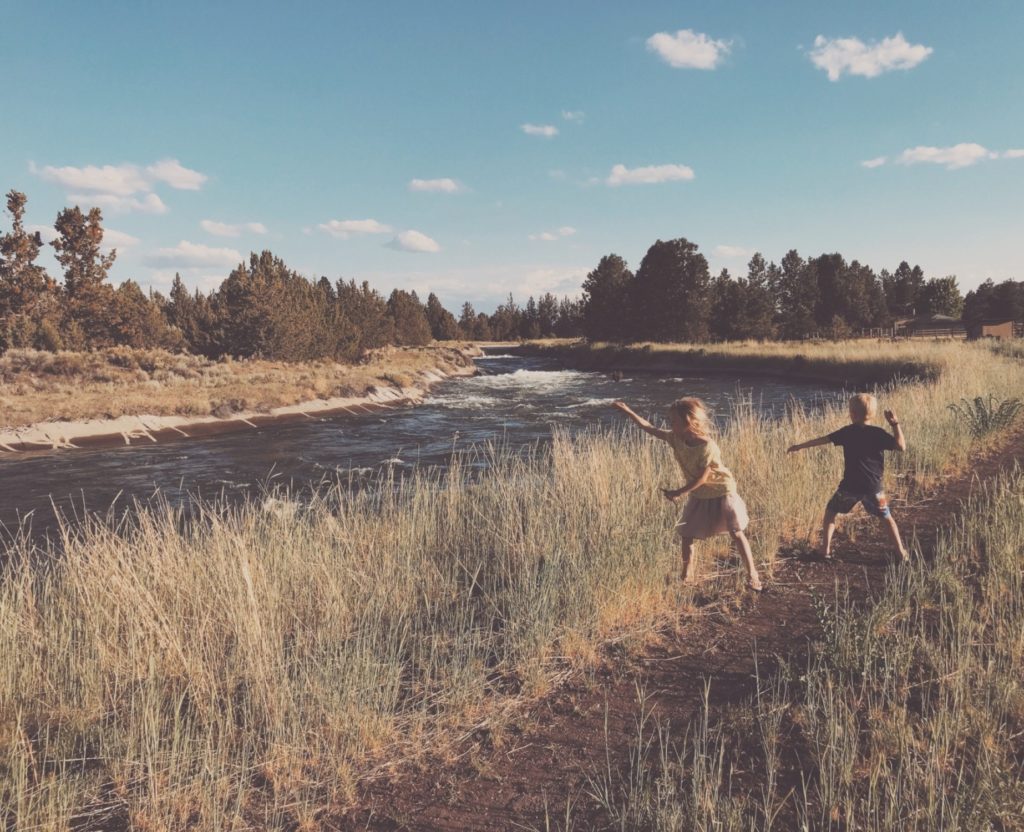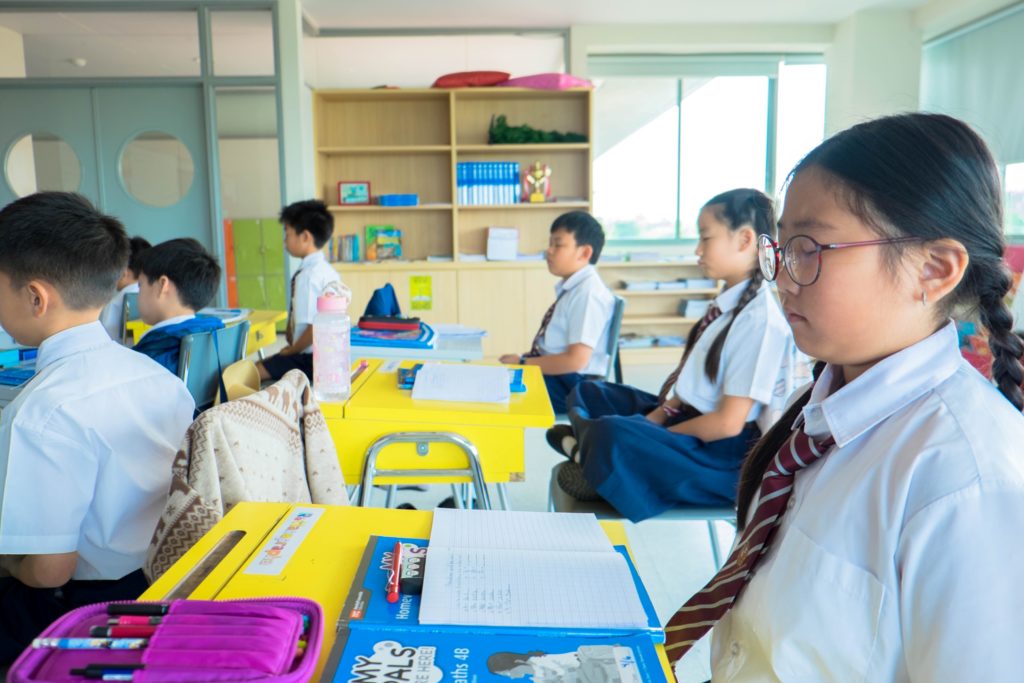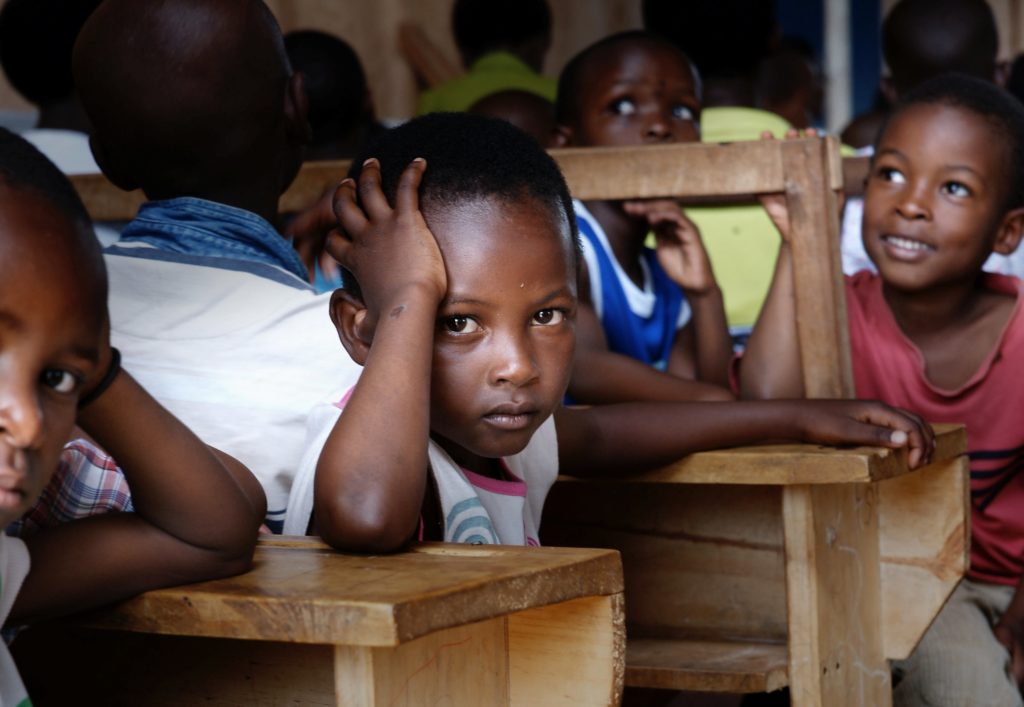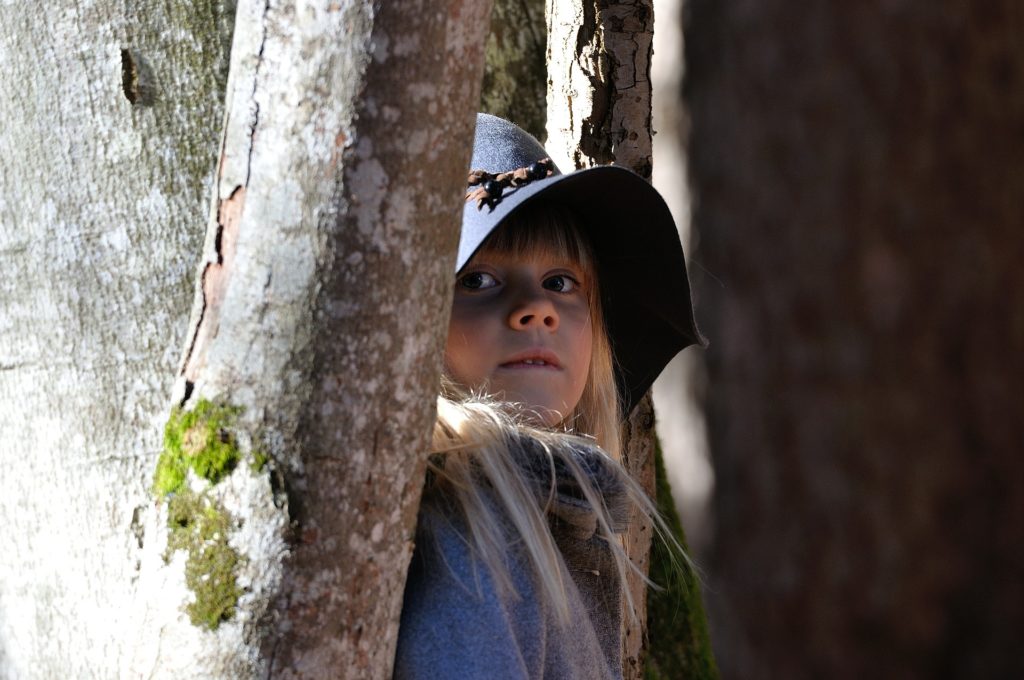As a parent, you are always making sure your children are healthy and taken care of. From day one, you have a primary care doctor working with you to ensure your children have all their physical health needs met. You are constantly looking for symptoms and signs that something might be wrong – a fever, a rash, a runny nose, or a cut.

But what are parents supposed to look for to help their children with their mental health? It’s not as commonly talked about, and the symptoms are not always the easiest to identify, either. Physical and mental health can actually go hand and hand. It can be important to look at our children’s health from a holistic perspective, both the physical and the mental health of our children.
Anxiety Disorders in Children
Anxiety disorders are considered to be the most commonly experienced mental health disorder in the United States. Approximately 1 in 8 children may have an anxiety disorder and many do not receive treatment.
Some of the common anxiety disorders children struggle with are Generalized Anxiety Disorder (GAD), Panic Disorder, Separation Anxiety Disorder, Social Anxiety Disorder, Selective Mutism, and Specific Phobias, such as fear of heights, water, or medical procedures.
Five Most Commons Anxiety Symptoms in Children
As a parent, it is important to not only be looking at the physical health symptoms, but also the mental health symptoms in our children. Since anxiety is a common mental health disorder that children struggle with, it is important to be aware of the five most common anxiety symptoms in children.
Being aware of these anxiety symptoms in children will help you identify if your children may be suffering from anxiety. Symptoms of anxiety are a result of the “fight or flight” response. This response is a normal reaction to danger, but when struggling with anxiety it can be heightened, and constantly in use even in situations without danger.
The five most common anxiety symptoms in children are:
- physical presentations such as trouble sleeping and stomach aches
- clingy behavior with parents
- trouble concentrating
- fear
- hiding or avoiding places
We will spend some time breaking down each of these symptoms below.
Physical Presentation
Anxiety can present physically in children. This can include a fast heart rate, sweating, shaking, feeling short of breath, chest pain, nausea or abdominal pain, chills, hot flashes, headaches, and restlessness or fatigue. Most commonly we will see fatigue and stomach aches.
Children are still learning so much about the world around them. They haven’t yet fully developed their vocabulary or learned what all their different emotions are. It is very hard for children to be able to verbally communicate that they are feeling anxious or worried. Since they do not have the words to do so, they often experience physical symptoms instead.
 For example, a child who is very anxious around school may constantly complain of a headache or stomach ache the night before or the morning before school. They have not learned the skills yet to state, “I am anxious about going to school,” so instead their bodies try to communicate by not feeling well physically.
For example, a child who is very anxious around school may constantly complain of a headache or stomach ache the night before or the morning before school. They have not learned the skills yet to state, “I am anxious about going to school,” so instead their bodies try to communicate by not feeling well physically.
This can be hard to identify. When your child complains of a constant stomach ache or headache, it is best practice to take them first to their primary care physician. However, if they are unable to identify a physical problem causing the pain, it may be worthwhile to see whether anxiety is causing the problem before jumping to the conclusion that your child might be faking it to get out of something they do not want to do.
Physical symptoms are much easier to see than some other symptoms. If you notice these symptoms seem to appear before a certain event, encourage your child to talk about how they are feeling about school, or the going to the doctor, or going to the pool or playground. It may be that they are anxious about the event rather than physically ill.
Clingy Behavior with Caregiver
A common behavior that parents and caregivers experience with young children is trouble with separation. For example, a two-year-old may cry and be visibly upset when the child’s parents leave them with a babysitter. Many parents and caregivers deal with this and have spent much time practicing separating and reassuring their children they will come back.
However, for a child suffering with anxiety and maybe even separation anxiety specifically, it might go further than that. A child suffering from anxiety may struggle with clinginess. They may follow their parent, caregiver, or even a sibling around.
This could be due to many factors. They may fear something will happen to them or to their loved one, they may be stressed about something else, or perhaps big changes are happening and this is where they find security. Sometimes children with anxiety will be extra attached to an item as well.
Many children have blankets or stuffed animals that bring them a sense of security. It can help them soothe and put themselves to sleep. However, eventually parents and caregivers are able to transition this item out of the child’s soothing practices. If a child is unable to self soothe without this item, it could be due to other factors that may be causing anxiety.
As adults, we can sometimes miss this symptom because we easily forget that children do not have the same abilities to communicate like we do. Helping your child by encouraging them to share, teaching them how to identify their feelings, and helping them to learn how to self-soothe can begin to help your child learn healthy coping skills.
Children often learn from example as well. Bringing them into your own practice of how you identify your own stressors, communicate your needs, and cope can help your child learn how to do this as well.
Trouble Concentrating
Think about a time in your own life when you were anxious or overly stressed about something. Maybe you were starting a new job and moving to a new city after you graduated college. Maybe you were about to get married or have a baby and were worried about what that new season in your life would look like. In those times of our lives, we can sometimes struggle to concentrate on other things because we are overwhelmed by our own anxieties.
 The same is true for our children. When they are anxious about something, they have a hard time concentrating on something else. This can intensify if they do not know how to communicate this need or feeling.
The same is true for our children. When they are anxious about something, they have a hard time concentrating on something else. This can intensify if they do not know how to communicate this need or feeling.
Your children’s teacher may send you an email home explaining how your child hasn’t been completing his or her work. When you bring this up, your child most likely won’t know how to say, “I am really anxious about grandma’s health (or whatever the situation may be that’s causing their anxiety) and therefore can’t concentrate on my school work.”
When a child is feeling overwhelmed and is unable to process or communicate what is going on inside their own head and body, it can appear like they are not concentrating. However, it isn’t that they don’t want to concentrate at school or on the conversation you are trying to have with them, but instead are so captivated by the thoughts in their own head that they are unable to concentrate on what else is going on.
Many children who are dealing with anxiety, especially if it is school or academic-related, do well with a routine, a schedule, or list. Breaking it down for them allows your child to have some control of what is going on.
Allow your child to work on math for 15 minutes then take a 10 minute break, followed by 15 minutes of reading. Giving them smaller and specific deadlines can help them from feeling overwhelmed by the many things they feel like they need to accomplish.
Fear
Fear can present itself in a few ways for children. A common behavior we see in children when they are anxious is asking questions frequently and consistently. Children with anxiety are worried about something and looking for reassurance.
A child may ask you the plan for the day over and over again in the morning because they are anxious about what is to come. They want to be prepared for any changes or unexpected events they may need to prepare for.
Often, we see children with constant thoughts and fears about safety. This can include thoughts and fears about their own safety, safety of their parents, their siblings, or even a friend. This kind of fear can also translate into controlling behavior.
When a child is worried about their parent, they may not want their parent to drive somewhere or go to a certain place. When this fear is manifested in wanting to control events, it can translate into behavior or emotional outbursts when things are not going as planned.
Children can also be afraid of certain things, places, or people if they are struggling with anxiety. Looking further into the reasons behind why your child is afraid of something can really aid in understanding if there is a bigger problem going on such as anxiety, rather than just a fear of one thing.
Avoiding Places or Hiding
As an adult who sometimes can feel overwhelmed with all the needs and wants I want to accomplish, I can find myself “hiding” from my To Do list by watching a show or reading a book. This is the same thing that happens to our children when they hide or refuse to go somewhere. A child is removing themselves from what is making them anxious.
 They may run and hide at a store if they see something or someone that makes them anxious. They may hide under their teacher’s desk when they know they are about to go to recess because a kid from another class will be there and they are anxious about seeing the other kid.
They may run and hide at a store if they see something or someone that makes them anxious. They may hide under their teacher’s desk when they know they are about to go to recess because a kid from another class will be there and they are anxious about seeing the other kid.
A child might avoid public bathrooms even though they need to go to the bathroom because they are anxious about them. Or they may refuse to get on the school bus because last time they tripped and embarrassed themselves. There are many reasons for the act of hiding or avoiding, but it is often attached to a child’s anxieties about something or somewhere.
Strategies for Helping Our Children Overcome Anxiety
These five common anxiety symptoms in children by themselves do not always lead back to anxiety. Some of them are common children behaviors that have to be worked through and on. However, when you put a combination of these symptoms together or they persist even after you have tried the things you know to do, there might be reason to take action to see if your child may be suffering from anxiety and need some help.
Just like when they have a cold and need to see the doctor or just like when we are overwhelmed and need to talk to someone, sometimes our kids need to talk about what is going on with someone who may have skills and strategies to help.
There are also some strategies to use at home that can help a child suffering from anxiety. At home, create a routine for the morning and the evenings. This allows your child to anticipate what it will look like and they can rely on this. Also, talk about feelings and identify them. Allow your children to feel their emotions and learn from them.
Christian Counseling for Anxiety in Children
However, I think the biggest helpful hint I can give is to have your child come to counseling. In counseling, your child can find a safe place and safe person to talk to. As a Christian counselor, I help children to learn to identify their feelings, communicate their needs, and practice healthy coping skills.
We also practice mindfulness skills where we will partner together to create a safe space within their own thinking, so they can calm themselves down when stressors increase their anxiety. We all need community and a safe space to be and to process. If you think your child might be struggling with anxiety, feel free to reach out to me or another counselor. I would love to chat and help however I can.
References
http://www.childrenshospital.org/conditions-and-treatments/conditions/a/anxiety-disorders/symptoms-and-causes
https://www.verywellmind.com/anxiety-symptoms-2633863
https://adaa.org/living-with-anxiety/children/childhood-anxiety-disorders
Photos:
“By the River”, Courtesy of Creationswap, CreationSwap.com; “School Days”, Courtesy of Michael Prewett, Unsplash.com, CC0 License; “Distracted”, Courtesy of Bill Wegener, Unsplash.com, CC0 License; “Hide”, Courtesy of Pezibear, Pixabay.com, CC0 License





